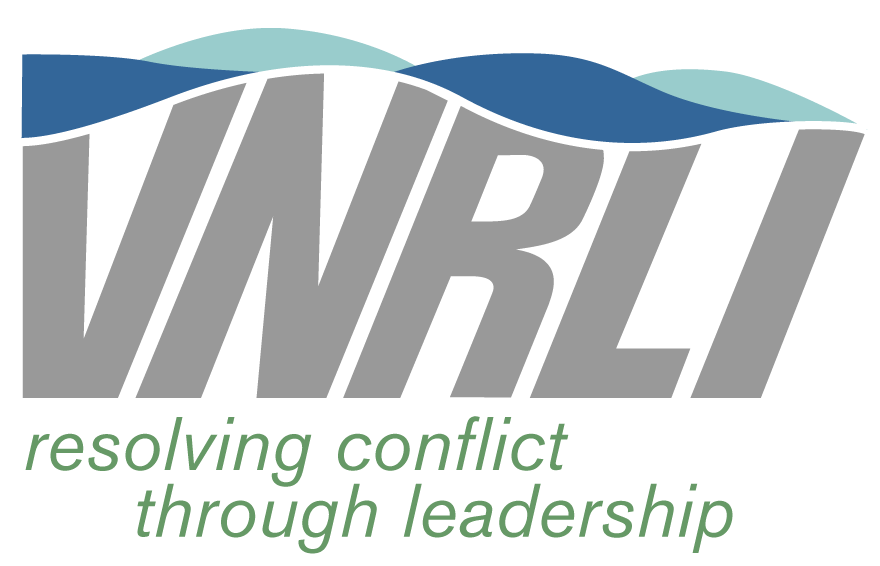Background
The Natural Resources Leadership Institute (NRLI) concept was first initiated in North Carolina in 1995, which in turn has “seeded” programs in Kentucky, Florida, and here in Virginia. Based on the success of the concept, the Virginia NRLI has been a foundation for Developing Professional Leadership Networks, an effort led by the Institute for Environmental Negotiation to assist other states such as Ohio, Colorado, and Texas in initiating similar leadership programs.
The concept for NRLI grew out of an acknowledgment that, as pressures on our natural riches mount, our community leaders face the increasingly difficult challenge of protecting and managing resources for multiple uses. Conflicts over natural resources issues often center on water resources, water quality, pollution, community and rural forestry management, waste management, coastal management, and land use. Watershed issues offer particular challenges not only because of their impacts on multiple communities but also they transcend multiple levels of governmental jurisdictions. There are social and practical costs for failing to resolve these environmental conflicts in a proactive manner. What often occurs is gridlock as decision-making moves from the meeting room, agency, and legislature to the courtroom.
Gridlock is not always inevitable. People involved in these disputes can reach mutually acceptable solutions by becoming more knowledgeable about public issues, communicating in a more meaningful and effective way, opening the debate to include all stakeholders, and negotiating to settle disagreements.
Purpose
The principal goal of the NRLI is to develop leaders who can help groups involved in contentious natural resource issues move beyond conflict toward consensus building and problem solving.
The NRLI program has several key goals. It aims to develop a network of natural resource managers across sectors who will have the skills needed to solve problems and build consensus around environmental issues, to move beyond conflict to find creative solutions. It achieves this by bringing together a cross-section of state leaders from the public, private and community/ nonprofit sectors who meet consistently for a yearlong series of workshops and training seminars. The fact that each NRLI class offers cross-sector perspectives is critical, as it enables people from these different sectors to interact and learn from each other in a safe, non-threatening environment, and thus broaden their own understanding and perspectives on environmental conflicts. These kinds of interactions are not usual in the field of environmental conflict resolution, and in fact enable participants to initiate and learn new behaviors.
Two goals of the NRLI curriculum are that participants will: 1) learn strategies and skills for conflict resolution and consensus building; and 2) learn more about the range of natural resource challenges being faced in the state, specifically about the complexities of resolving conflicts surrounding these issues. These goals are achieved through core curriculum components that address such things as: leadership and relationship building; personal communication, listening and conflict resolution skills; processes and strategies for conflict resolution and consensus building; public policy and decision-making; and natural resources issues in the state.
Method
The workshops and training seminars draw on a wide range of teaching methodologies, from mini-lectures, panels, and large group and small group exercises. This process tends to emphasize hands-on experiential learning techniques that give participants opportunities to develop and practice skills taught in the classroom. Case studies and field trips are used to make the natural resources issues come alive to participants in a way that does not occur in a classroom. Lastly, in some states, at the end of the year participants undertake a mentored “practicum,” which is a project involving conflict resolution at some level that they will initiate and facilitate to completion.
